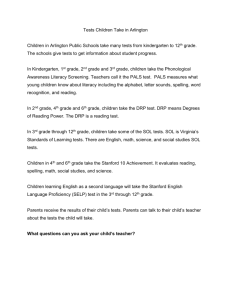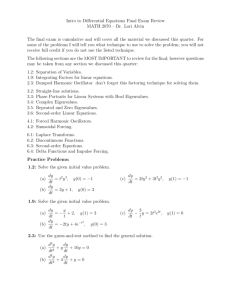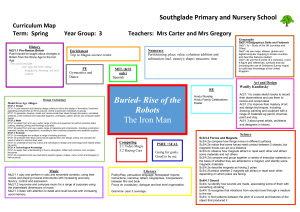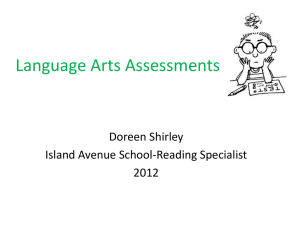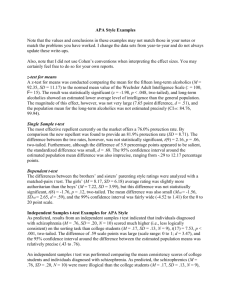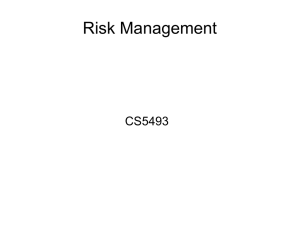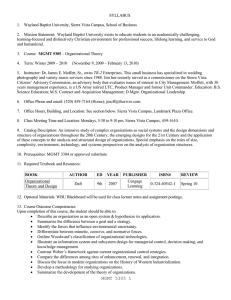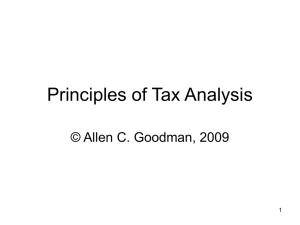t test write-up Based on the work of an educator that believed new
advertisement
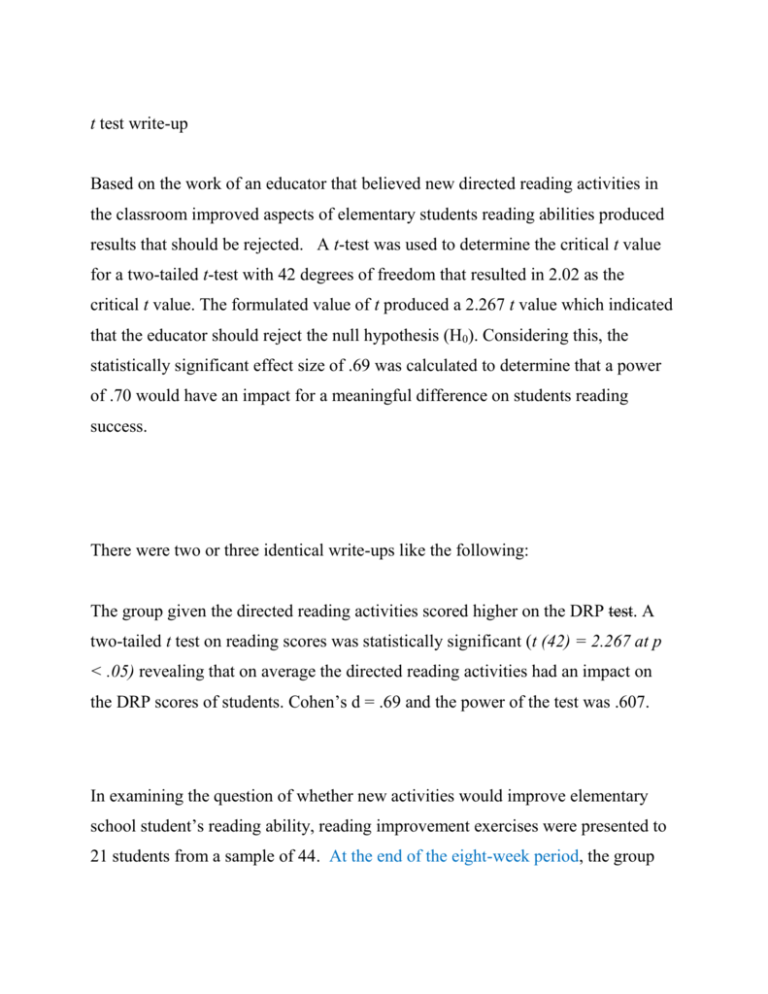
t test write-up Based on the work of an educator that believed new directed reading activities in the classroom improved aspects of elementary students reading abilities produced results that should be rejected. A t-test was used to determine the critical t value for a two-tailed t-test with 42 degrees of freedom that resulted in 2.02 as the critical t value. The formulated value of t produced a 2.267 t value which indicated that the educator should reject the null hypothesis (H0). Considering this, the statistically significant effect size of .69 was calculated to determine that a power of .70 would have an impact for a meaningful difference on students reading success. There were two or three identical write-ups like the following: The group given the directed reading activities scored higher on the DRP test. A two-tailed t test on reading scores was statistically significant (t (42) = 2.267 at p < .05) revealing that on average the directed reading activities had an impact on the DRP scores of students. Cohen’s d = .69 and the power of the test was .607. In examining the question of whether new activities would improve elementary school student’s reading ability, reading improvement exercises were presented to 21 students from a sample of 44. At the end of the eight-week period, the group given directed reading activities scored higher on the DRP test at the end of the eight week period than the control group. A two-tailed t test on reading scores was statistically significant (t (42) = 2.267 at p < .05) indicating that on average the directed reading activities had a positive impact on the DRP scores of students. Cohen’s d = .69 and the power of the test was .607. Two of the responses were identical… The group given the directed reading activities scored higher on the DRP test. A two-tailed t test on reading scores was statistically significant (t(42)=2.267 at p<.05) revealing that on average the directed reading activities had an impact on the DRP scores of students. Cohen’s d = .69 and the power of the test was .607. A study was performed to determine if a new directed reading activity in the classroom will help elementary school pupils improve some aspects of their reading ability. The examiner arranged for a third grade class of 21 students to follow the treatment for an 8-week period. A control classroom of 23 third graders followed the same curriculum without the specific treatment. At the end of 8 weeks, all students were given a DRP test, which measures the aspects of reading ability that the treatment is designed to improve. The mean score on the DRP test for the N=21 treatment class was 51.4762, with a standard deviation of 11.00736, while the mean score for the N=23 control class was 41.5217, with a standard deviation of 17.14873. A two-tailed t-test for equality of the means was statistically significant t(42)=2.267, p < 0.05 (p = 0.029) revealing a measurable difference between the two groups. Cohen’s d was found to be 0.69085 with a power of 0.609369 indicating that although significance was found, additional subjects should be added to increase power to the 0.80 level. It would appear that the treatment did indeed make a difference, but in order to make the results more meaningful a larger study should be performed. This response is too long…too wordy. This experiment tested the hypothesis that new directed reading activities in the classroom will help elementary school children improve some aspects of their reading ability. Two groups of third grade students were used in the study. One group of students (n = 21) used the new directed reading activities for an 8-week period. A second, control group (n = 23) followed the same curriculum without the new reading activities. A DRP test was given to all students to measure the aspects of reading ability that the treatment was designed to improve. The results showed that the students in the control group had a DRP mean score of 41.52, whereas the students following the new directed reading activities had a DRP mean score of 51.48. The standard deviations were 17.15 and 11.00 respectively. This represents an effect size (d) of .68, meaning that the two groups differed in DRP scores by more than 2/3 of a standard deviation. Student’s t test was used to compare the groups. The resulting t(42) was 2.27, and was significant at p < .05, showing that the new directed reading activities significantly improved some aspects of reading ability. The 95% confidence interval on the difference in means is 1.091 ≤ μ1-μ2 ≤ 18.818. This is quite a wide interval, but keep in mind that the two sample sizes were 21 and 23. The power calculation is .615.
